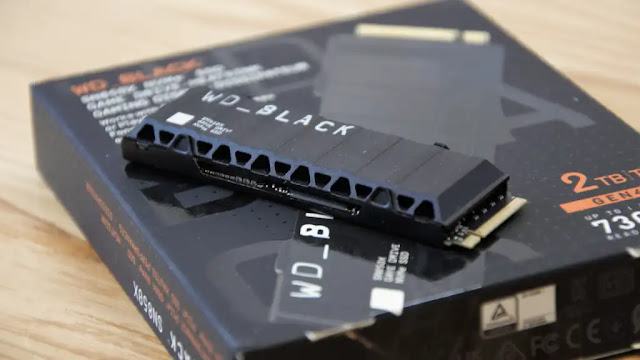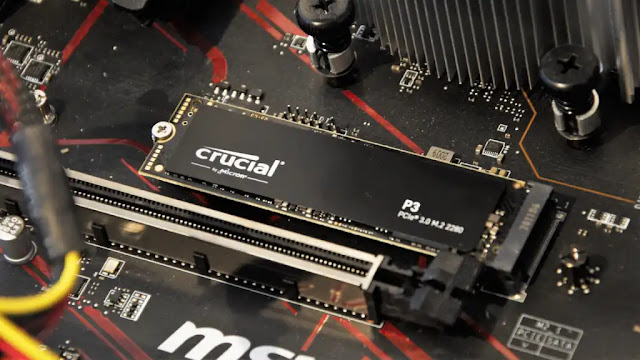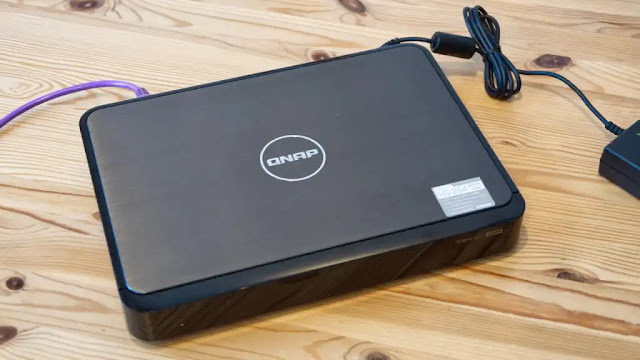USB flash drives are better than ever, but there's a lot to consider these days. Do you need USB 2.0, 3.0, or even 3.1, and what about USB-C support? What do all those read and write speeds actually mean?
USB flash drives were once ubiquitous, the default way of transferring files between devices or taking them from place to place. That’s changed a bit as internet speeds have improved, not to mention cloud storage and file transfer services like Dropbox or Google Drive have boomed in popularity, but there’s still a place for the humble USB stick in many people’s lives.
Whether it’s the reliability of having your files in a single place (and not reliant on an internet connection), the security that comes from knowing someone would need physical access to the device to get at your files, or just the fact that USB sticks support file sizes that most cloud services would baulk at, there are plenty of good reasons to keep a USB drive or two to hand.
Still, you don’t just want to grab any old thumbstick, and there are a few factors to consider, from the physical size and design to storage capacity, read/write speeds, and support for different USB formats. Here’s what you need to know, along with our recommended USB drives - all of which we’ve tested ourselves.
Storage Capacity
This is a simple one: how much storage do you need your USB stick to have?
As flash storage has gotten cheaper, we’ve now reached the point where it’s pretty easy to get a good quality 16GB or even 32GB drive for as little as £10/$10 or so, so there’s really not much reason to buy one any smaller than that.
That will probably be enough for most purposes, but if you’re going to use it to create operating system boot drives, transfer 4K video or something similar, you might want to spend a little more to get a 64GB or 128GB memory stick - or even a mammoth 1TB drive - if you can swing the extra cost.
USB Formats
USB 3.0 is now the de facto standard across the industry, so we’d recommend you’d look to that at a minimum. You’ll still see some USB 2.0 drives - and they’ll work fine - but you’ll be taking a serious hit to your potential transfer speeds, with no real cost saving unless you’re buying something very high capacity - at which point you’ll probably want those faster speeds.
It’s worth noting that you’ll only benefit from the extra speed of 3.0 when using the drive with a compatible port. Check if there’s a blue highlight inside the port - if there is, that means it supports USB 3.0 speeds (up to 10 times as fast). Any good drive should be backwards compatible with 2.0 ports too, you just won’t benefit from the faster speeds.
You’ll also see some memory sticks that support USB 3.1, which is even faster still. You shouldn’t necessarily get drawn into the hype though. While 3.1 is theoretically twice as fast as 3.0, right now you won’t find very many computers or other devices that feature 3.1 ports, so most of the time you’re unlikely to take advantage of the extra speed.
Finally, it’s now possible to buy a few USB-C memory sticks, which take advantage of the rise of the smaller, reversible USB-C ports in phones, tablets, and laptops. Even better, there are some drives that feature both USB-A and USB-C connectors, so that you can access the same files from a range of different devices, or even a Lightning connector so you can plug it into an iPhone or iPad.
Transfer Speeds
Transfer speeds are partly dictated by the USB standard the drive uses, but there’s also a lot of room for variation between different memory sticks depending on their manufacture.
Drives will advertise both read and write speeds. Read speeds are important for playing files off devices - useful if you want to watch a movie you’ve saved on a thumbstick - and are usually much higher.
Write speeds matter more if you’ll frequently be transferring large files, or saving them directly to the drive. It’s not unusual to see these be much lower than the read speeds, which means that if a drive is only advertising a single speed without specifying which it is, it’s almost certainly the read speed.
How We Test USB Drives
We use CrystalDiskMark 6.0 to test the read and write speeds of each memory stick. This tests both the sequential speeds (reading and writing large blocks of data) and small-file performance, using 4KB reads and writes, but we’ll be focussing on sequential scores: they’re much more important for USB drives, as they better reflect the speeds you’ll see transferring files onto and off the drive.
Tests are carried out on our Intel Core i7-based test rig over USB 3.0 - meaning we haven’t been able to test the full speed capacity of any USB 3.1 sticks, so bear that in mind.
SanDisk Extreme Go USB 3.1 Flash Drive
Still, the tech inside is anything but old. This is one of the first drives to market that supports USB 3.1, so should be one of the fastest memory sticks around, with SanDisk boasting up to 200MB/s read and 150MB/s write speeds.
Of course, that’s only over compatible USB 3.1 ports, which you’re unlikely to come across on many devices. Our test rig caps out at USB 3.0, which gave us a solid sequential read speed of 155MB/s, and our fastest sequential write speed so far of 68MB/s.
This is a solid USB 3.1 drive that will perform well on current hardware and is future-proofed for faster ports. We don’t love the design, but at least the size makes it harder to lose than some of the smaller sticks.
The Extreme Go is available in either 64GB (£26.99/$32.99) or 128GB (£49.49/$48.95), which works out to around 40p/40¢ per GB.
SanDisk Ultra Dual Drive Luxe USB Type-C Flash Drive
It doesn't offer the same blistering speeds as the Extreme Go, with promised 150MB/s read performance (doling out 110MB/s using our i7, USB 3.0 machine-based testing). But what it lacks in top-end pace (and let's not forget, it's still fast), it makes up for in versatility and style.
The clue is in the name but the 'Dual' emphasises the stick's double-ended design, which puts both a USB-A and a USB-C connection at your fingertips, making it easy to move files between your computer and your mobile devices, or vice versa.
Let's not forget it's also rendered in a beautiful brushed metal finish, that adds the kind of sophistication that's sorely lacking from pretty much every other stick here.
There's also the matter of capacity. This USB-C-laden Luxe starts at a respectable 32GB (£12.99) but if your wallet allows, can accommodate up to a whopping 1TB of internal storage (£243.99) - the highest in the lineup.
Toshiba TransMemory U365 USB Drive
Sheer size is far from the only reason to recommend the U365 though. For one thing, there’s the speed: the sequential read speed of 210MB/s is comfortably the fastest of any of the drives we’ve tested over USB 3.0 though it’s let down by a disappointing 33MB/s write speed.
It’s also one of the sleekest looking memory sticks we’ve had in (for whatever it’s worth), with a neat minimalist design and slide-out connector. Between the design, the speed, and the large capacity, this is our recommended memory stick for playback of 4K video.
The big downside right now is the availability. At the time of writing, the only place we can find selling it online to the UK is a third-party seller on Amazon, offering the 256GB model for £82.76 including delivery, for a per-GB price of 32p, while we can’t find it in the US at all.
SanDisk Ultra Dual Drive USB-C
The Dual Drive is another SanDisk memory stick that supports USB 3.1, but as the name suggests, it also has another trick up its sleeve: support for both USB-A and USB-C.
You can switch between the two connectors using a simple slider, making the Dual Drive an easy way to move files between a standard Mac or PC and either a USB-C enabled smartphone, or one of the many modern laptops and ultrabooks that only include the smaller USB-C ports.
In terms of speeds, this falls roughly in line with SanDisk’s other USB 3.1 drives - albeit when tested over a 3.0 port. We got a sequential read speed of 133MB/s - not far off SanDisk’s 150MB/s boast - while the write speed of 67MB/s falls only fractionally behind the SanDisk Extreme Go in terms of performance.
The design is sleek and simple - small without making you worry you’re going to lose it, and with contrasting grippy plastic and brushed metal finishes.
Capacities are impressive too, ranging from 16GB all the way up to 256GB, and at 33p/28¢ per GB for the $72.99/£87 top tier model, prices are fair too. With strong speeds, future-proofed USB 3.1 support, and a versatility rivals can’t match thanks to the USB-C plug, this is a very easy drive to recommend.
PNY Duo Link OTG USB-C
PNY's Duo Link OTG is a USB 3.1 flash drive that's built for 2018. That means, as with several others here, that it offers both USB-C as well as the traditional rectangular USB port. You simply move the slider to either end to select one of the ports, and the design ensures you can't plug a device onto both ends at the same time.
It's available in 16GB, 32GB, 64GB and 128GB capacities with prices starting at just £9.99 / US$9.99.
In Crystal Disk Mark we found that read speeds were fractionally higher than PNY claims at 133MB/s. There's no boasting on the packaging about write speeds, but the 58MB/s that the drive recorded in our tests is very good indeed.
We tested the 32GB version, which costs £12.99 or US$15.99. That's the same as the Dual Drive, but the 128GB model works out a fair bit cheaper than the equivalent SanDisk version, so if you don't mind slightly slower write speeds you can save by opting for the PNY.
SanDisk Ultra Fit USB 3.1 Flash Drive
Like the SanDisk Extreme Go, it supports USB 3.1, but boasts slightly slower speeds than that drive, with advertised read speeds of up to 130MB/s and write speeds of 60MB/s.
What’s surprising is that we actually did see those sorts of speeds even when using USB 3.0 - though we’re not sure if it would actually go any faster over 3.1. We measured a sequential read speed of 134MB/s - faster than SanDisk advertises - and write speeds of 44MB/s, which isn’t too far off their claim.
Even better, despite the ultra-portable package it’s available in sizes up to 256GB, which only costs £56.99/$69.99 - just 22p/27¢ per GB.
Integral Pastel USB 3.0 Flash Drive
All of which is why we were so surprised when our testing revealed it was one of the fastest drives we’ve had in the office, with read speeds almost double what Integral advertises, and write speeds more than quadruple the claims.
Integral boasts sequential read speeds of up to 80MB/s, but we saw 148MB/s in our testing, while the company promises a very uninspiring write speed of up to 5MB/s, but in fact delivers 22MB/s - still the slowest write speed in our group test, but nothing to sniff at.
The low price doesn’t hurt either - £15 for 64GB works out at 24p per GB, which is very friendly - though we can’t find the USB 3.0 version on sale online in the US right now, only the older (and slower) 2.0 model.
Kingston DataTraveler Bolt Duo
The big selling point here is the double-ended design, with support for both USB-A 3.1 and Apple's Lightning port - making this perfect for Apple aficionados looking for a quick way to back up or transfer files between an iPhone/iPad and a Mac or PC.
Those transfers will be fast, too, with a read speed of 140MB/s in our tests, paired with an even more impressive 79 MB/s write speed - the fastest across all of the drives we've tested.
The metal design is both attractive, sturdy, and compact, and Kingston even includes a small silicon sleeve which should keep it safe from damage, and includes a keyring attachment.
So what's the catch? As we said, it's not cheap. Available in 32/64/128GB, prices start from £49.99/$59.99, meaning at the low capacity you're paying more than £1/$1 per GB. That means if you just want a standard USB drive this probably isn't the best value around, but if you don't mind paying a premium for Lightning support it is well worth considering.
👉👇You May Also Like👇👌
View the original article here











%20Review.webp)












0 comments:
Post a Comment